
 |
|
|
#1 |
|
All the news that's fit to excerpt
Name: newsie
Location: who knows?
Join Date: Jun 2008 Motorcycle(s): only digital replicas Posts: Too much.
|
[motorcycle.com] - 2015 Yamaha YZF-R1/YZF-R1M First Ride Review
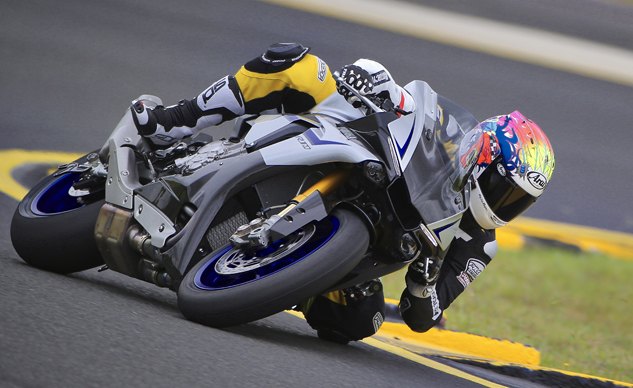 2015 Yamaha YZF-R1 Editor Score: 94.5%Engine 20.0/20Suspension/Handling 14.0/15 Transmission/Clutch 9.5/10Brakes 9.5/10 Instruments/Controls5.0/5 Ergonomics/Comfort 9.0/10 Appearance/Quality 9.5/10Desirability 10.0/10Value 8.0/10Overall Score94.5/100Cresting the hill coming onto the front straight at Sydney Motorsport Park (better known as Eastern Creek Raceway), the throttle is wide open in second gear. As I click into third, the front comes up, rests at a neutral position about a foot off the ground, then gently returns to Earth moments later. All the while, the throttle was resting on the stop. Drive never felt interrupted, and despite the roughly 200 horses packed inside the new 2015 Yamaha YZF-R1, there was never a fear of being too liberal with the throttle. That’s when I knew Yamaha has just raised the bar. A lot has changed since the original R1 was introduced in 1998, and with the 2015 Yamaha YZF-R1 and R1M, never has the line between MotoGP and lil ‘ol me been so blurred. That’s not just a Yamaha marketing tagline, either. Valentino Rossi himself (along with American Superbike champ, Josh Hayes) had a significant role in developing the R1, with the aim to incorporate the most sophisticated level of electronics on a production sportbike. These are just a few examples:
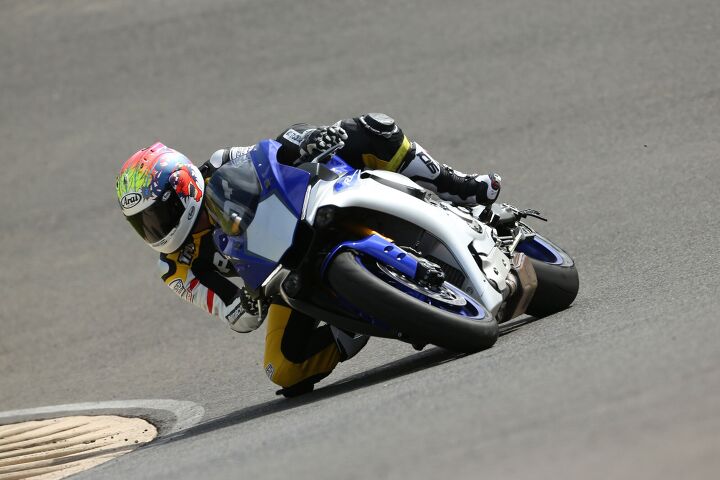 The closest thing to a MotoGP bike Yamaha has ever produced, the 2015 R1 takes after its M1 cousin in many ways. The closest thing to a MotoGP bike Yamaha has ever produced, the 2015 R1 takes after its M1 cousin in many ways.MotoGP Tech For All With the exception of Slide Control, none of this is new technology. What makes the R1 reach a new level of sophistication is the six-axis Inertial Measurement Unit (IMU), of which a similar system is also seen on the new Ducati 1299 Panigale. Consisting of a gyro sensor capable of measuring pitch, roll, and yaw, it’s accompanied by an accelerometer measuring acceleration in the X, Y and Z axis at an astonishing rate of 125 calculations per second. What this does is allow systems like the Variable Traction Control, Lift Control, Unified Brake System and Ohlins Electronic Suspension (seen on the R1M) to operate at a level of precision yet to be seen on a production motorcycle. Traction control works in conjunction with the IMU to meter power not just according to wheel speed differential, gear position and throttle position, but also in relation to lean angle, all within the pre-chosen TC setting.  This graphic explains the six axis the IMU is monitoring 125 times per second. This graphic explains the six axis the IMU is monitoring 125 times per second.The Launch Control System works in a similar fashion. Revs are limited to 10,000 rpm and the IMU detects front-to-rear pitch rate to control engine power via the ECU to only allow the amount of lift you select from one of the three settings. Where the IMU really comes into its own is with the all-new Slide Control System, the patent-pending technology that’s the first of its kind on a production motorcycle. What’s amazing is the technology was only first used on the M1 MotoGP machine in 2012! Working in tandem with the IMU and traction control, if a slide is detected during hard acceleration and high levels of lean angle, the ECU will control engine power to help reduce the slide. Step up to the R1M and the level of tech goes up a notch. On top of the above listed techno bits, the M adds Ohlins electronic suspension that works in conjunction with the IMU. In Automatic mode, front and rear compression and rebound damping are constantly adjusted with input received from the IMU. Three different Automatic settings can be selected from the menu options, allowing the rider to basically select a level of firmness they want for the given conditions. 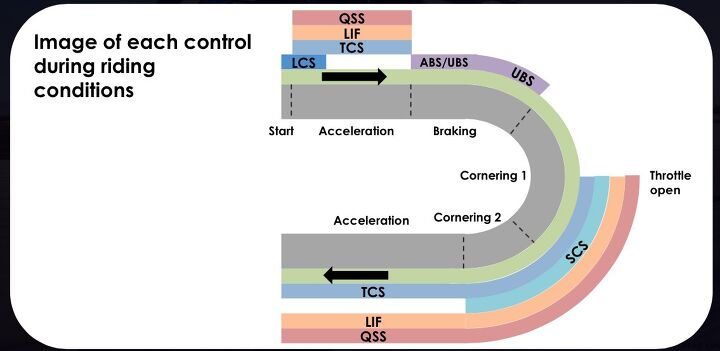 Here’s an excellent graphic displaying each of the R1′s main electronic systems and when they operate. The straight sections are relatively simple to figure out, but take note of the corner exit and how slide control operates mid-corner, when lean angles are steepest. Here’s an excellent graphic displaying each of the R1′s main electronic systems and when they operate. The straight sections are relatively simple to figure out, but take note of the corner exit and how slide control operates mid-corner, when lean angles are steepest.Manual mode is much like traditional suspension components, where the rider simply chooses which of the 32 different compression or rebound settings they prefer. However, instead of turning knobs or counting clicks, you simply dial in a number on the dashboard display. Both Manual and Automatic modes feature three presets which are completely customizable. A 16% stiffer spring rate is used on the R1M front compared to the standard R1, while the rear is only slightly stiffer at a 2% increase. Maybe the most advanced bit of MotoGP tech to trickle down to the R1M is Yamaha’s Communication Control Unit. With it, the R1M records several parameters of your time on track, including speed, lean angle, throttle and brake usage, among others. Then, using a GPS antenna, it records a course map and keeps lap times. From there the user can download and overlay this data onto a Google map of the course with the Y-TRAC app for their Android or iOS devices. Ultimately, the rider can study the data, learn where they can improve, and even share the results with others for tips and tricks… or simply to brag. Tweaks to the bike can also be made all from the app. Those changes can then be downloaded directly to the bike from the app. No more bloody knuckles! 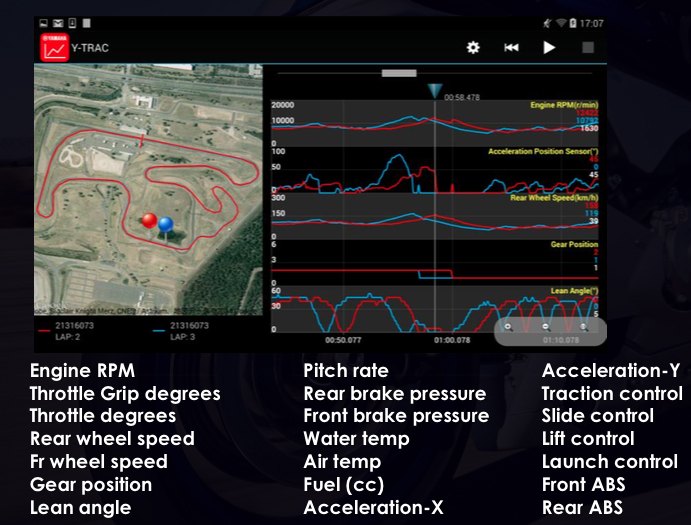 The Yamaha Y-TRAC app records 21 different channels of information, which you can then download onto your device for viewing, analyzing, tweaking, or bragging… whatever your heart desires. The Yamaha Y-TRAC app records 21 different channels of information, which you can then download onto your device for viewing, analyzing, tweaking, or bragging… whatever your heart desires.But Wait, There’s More While Yamaha has shaken up the sportbike world with this clever array of electronics, it’s the complete revamp of the R1 that has the moto press as wide-eyed about this bike as they were nearly two decades ago when the original R1 was introduced. Drastic steps have been taken not only to shed weight, but also to give it the horsepower needed to compete with the best the rest of the world has to offer. 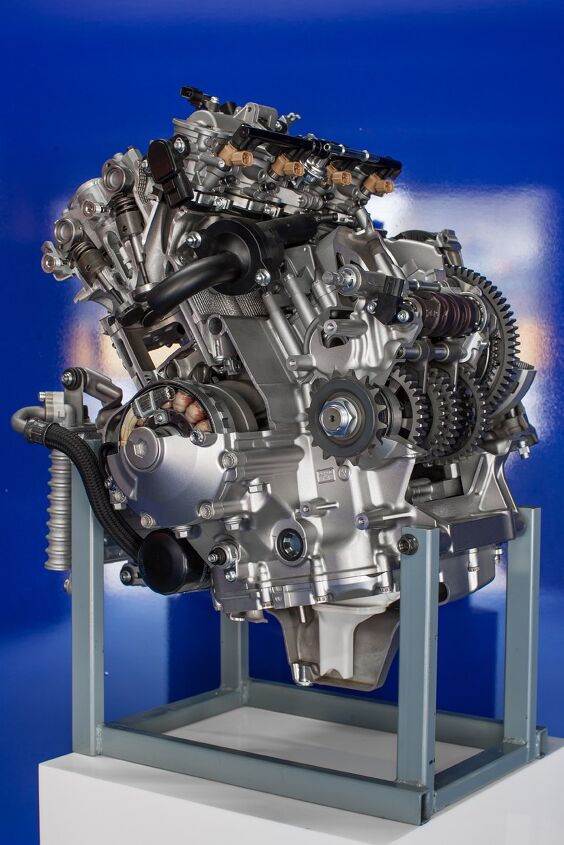 The all-new R1 engine is only slightly wider than a piece of paper held lengthwise. Meanwhile, it’s lighter and more powerful than the model it replaces. Look closely and you can see the transmission gears hollowed out for more weight savings. The all-new R1 engine is only slightly wider than a piece of paper held lengthwise. Meanwhile, it’s lighter and more powerful than the model it replaces. Look closely and you can see the transmission gears hollowed out for more weight savings.Yes, shedding weight and adding power is a commonly used phrase amongst sportbikes, but get this: the all-new 998cc inline-Four is 33mm narrower and 8.8 pounds lighter than the 2014 engine, all while making 9% more power. The crossplane crankshaft, and its offset firing order, is back, and Yamaha says crankshaft inertia is reduced 20% from last year. Main bearing journal diameter has increased 2mm, while rod journal width has gone up 1mm. Despite this, overall crank width is 27mm less than before. Fracture-split titanium connecting rods – a first for a production motorcycle – are 60% lighter than their steel equivalents while providing exceptional strength and allowing rpm to increase another 1000 revs (redline is 14,500 rpm). According to Yamaha, the connecting rods are lighter than last year’s bike (270 grams vs. 338 grams), which the company claims makes them the world’s lightest con rods on a production 1,000cc four cylinder engine. From a technical standpoint, this process yields increased circular precision in the rod’s big end to reduce deformation at high rpm. The rod is also 1.0mm shorter than its predecessor. A 10.5-liter airbox carries 24% more volume than the old bike, its air fed through 45mm throttle bodies. Yamaha’s variable length intake tracts have been tweaked, and now high-rpm funnel length is 20% shorter than before for increased high-rpm performance. Roller rocker arms (a first for the R1) replace the shim-under-bucket design of old, allowing for relatively high valve lift without the need for aggressive cam lobes. Secondary injectors get a straighter path towards the intake valves, and once in the combustion chamber, the pistons squeeze the air/fuel mix to a lofty 13.0:1 compression ratio before explosion. 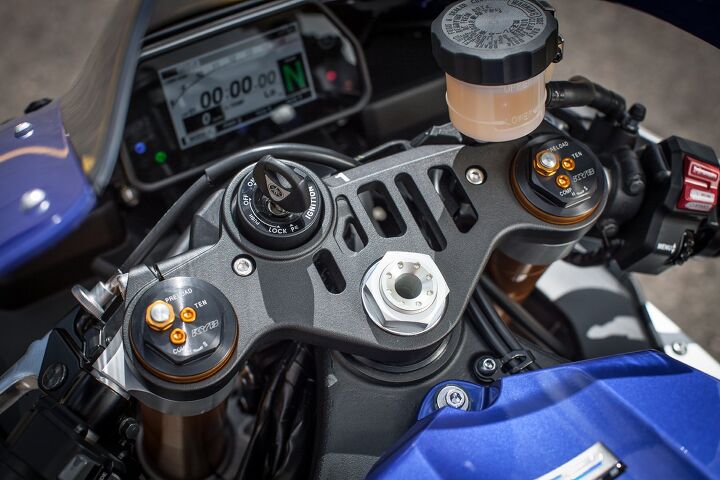 KYB suspension on the standard R1 features preload, compression and rebound adjusters conveniently located atop the fork tube. KYB suspension on the standard R1 features preload, compression and rebound adjusters conveniently located atop the fork tube.The aluminum pistons themselves feature a diamond-like coating on the pin and shave 8.5 grams compared to 2014 despite bore size going up 1.0mm (79.0mm x 50.9mm vs. 78.0mm x 52.2mm). A few grams of weight savings may not sound like much, but it’s huge considering how quickly an engine spins. To help reduce parasitic losses, the cylinders are offset 2mm toward the exhaust side, a technique Yamaha says is a first for one of its four-cylinder engines. Further weight reduction in the engine is achieved through magnesium engine covers and utilizing aluminum engine bolts instead of steel. Weight reduction wasn’t limited to the engine, of course. Aluminum is used for the Deltabox frame, and magnesium for the subframe and wheels. With the change to magnesium hoops, wheel weight is reduced by a combined 870 grams (almost 2 lbs.) compared to last year. The lightweight material yields a 4% reduction in polar moment for the front and a 11% reduction in the rear. 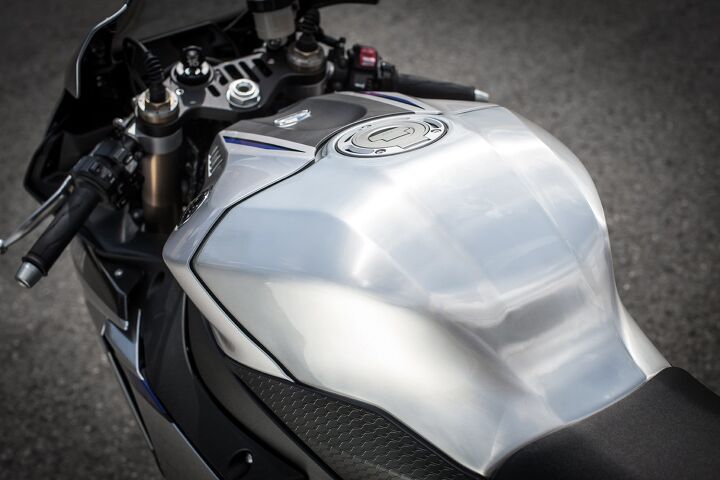 Both R1 models get aluminum tanks, but the R1M is hand finished, meaning no two tanks are exactly alike. Both R1 models get aluminum tanks, but the R1M is hand finished, meaning no two tanks are exactly alike.Fuel tanks are aluminum instead of steel, making the R1’s tank the lightest production tank in its class at 4.6 pounds, according to Yamaha. For comparison, Yamaha research says the Ducati 1199 Panigale’s tank is 6.4 pounds, while the BMW S1000RR comes in close to the R1 at 4.9 pounds. In contrast, the 2014 R1’s steel tank was a rather hefty 8.4 pounds! All told, the new R1 weighs in at 439 pounds, ready to ride, while the R1M comes in at 443 pounds. For comparison, the standard R1 is 10 pounds lighter than the S1000RR and 4.2 pounds lighter than the Kawasaki ZX-10R, but still 19 pounds heavier than the Ducati 1299 Panigale. 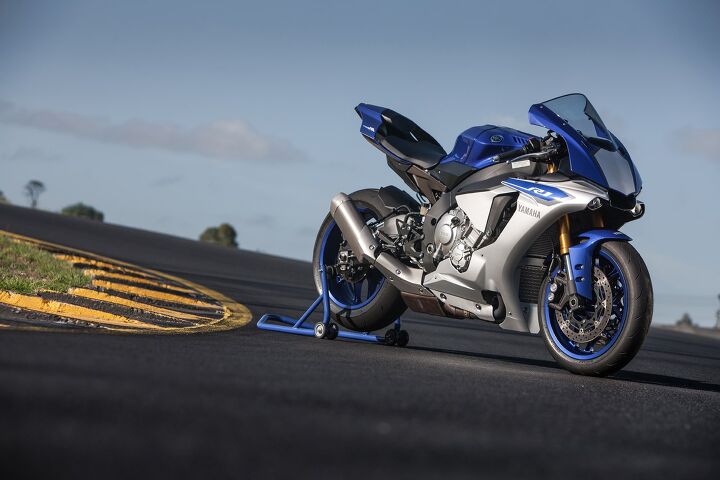 R-Wonderful Ultimately, the point of electronic aids on motorcycles is to make them easier and safer to ride. This instills confidence, and with confidence comes speed. In the supersport class especially, speed needs to remain consistent throughout a race, even as the tires start to wear. This is the magic the R1 and R1M are able to deliver. I admit the above tech talk is really long and lengthy, but it’s worth highlighting the complete overhaul Yamaha gave to the R1 in order to appreciate how it rides. By any measure, nearly 200 crankshaft horsepower is a lot to handle, and after cresting the hill in my opening example, the next lap I turned Lift Control off to see what difference it would make. 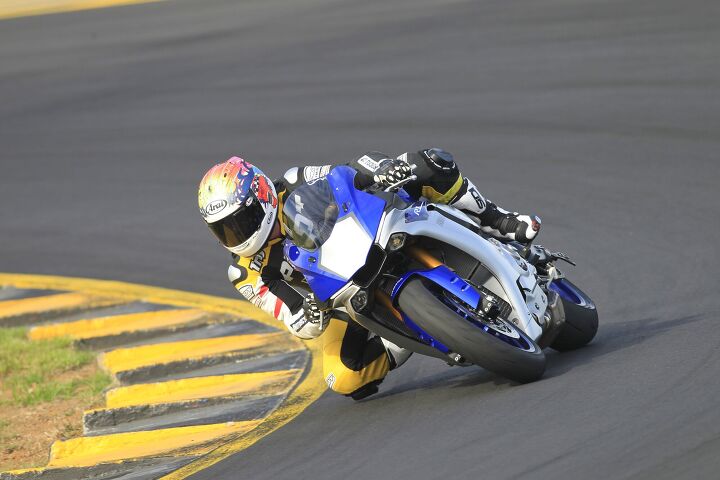 Our first three sessions were spent aboard the standard R1. Instantly* it was just so easy to ride quickly. Our first three sessions were spent aboard the standard R1. Instantly* it was just so easy to ride quickly.Immediately I noticed the front was coming up not only over the crest of the hill, but at various other places throughout the course. All the wheelies were manageable but required greater throttle modulation. Lift Control, set to its least intrusive setting, works so well I only noticed it once each lap (and very faintly at that) when in fact it was activating multiple times. All the while my right wrist was twisting the throttle to the stop. With less of a need to worry about throttle modulation, my attention could instead shift towards figuring out the track. As the laps piled up, the level of confidence the other rider aids inspired quickly started to rise. Both the R1 and R1M come standard with Bridgestone RS10 tires in 120/70-17 front, 190/55-17 rear (R1M gets a 200/55-17 rear), but for this test Yamaha fit standard R1s with Bridgestone’s DOT race tire, the RS10 Type R. Hot and humid conditions punished both bike and rider, and the RS10 tires were showing signs of wear. 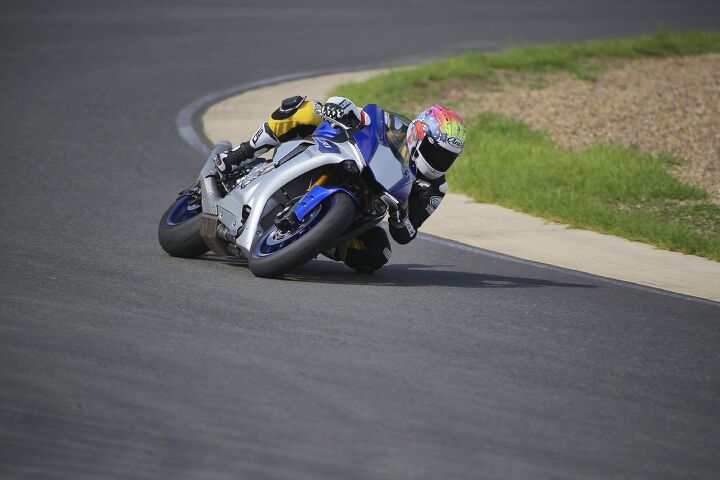 Direction changes happen quickly thanks to the lightweight magnesium wheels. Direction changes happen quickly thanks to the lightweight magnesium wheels.Despite this, I still opened the throttle as I normally would, confident the R1’s lean-angle-sensitive traction control would have my back if needed. Other riders clearly felt the same level of confidence – I followed a Japanese journo as he whacked the throttle wide open mid-corner, leaving a huge black line from the middle of the final turn all the way to the track’s edge. Before I knew it, he was halfway down the front straight while I was still picking my jaw up from the floor. It was a brilliant visual demonstration of Yamaha’s Slide Control System working in tandem with traction control. The beauty of the R1’s electronic intervention is how subtle it works. Using traction and wheelie control as examples, it was easier to notice when electronic rider aids from both Japanese and European manufacturers would kick in, as power would abruptly cut in and out to control excessive rear wheel speed. Though the software from these other OEMs have improved over time, they don’t match the refinement seen on the R1. Having established the R1’s software is a cut above the rest, the hardware, too, deserves some mention. With nearly 200 horses, the R1 delivers an enormous rush of speed at high revs. A toe tap up engages the slick quickshifter (no clutchless downshift, however) and the bike simply rockets away from any situation. 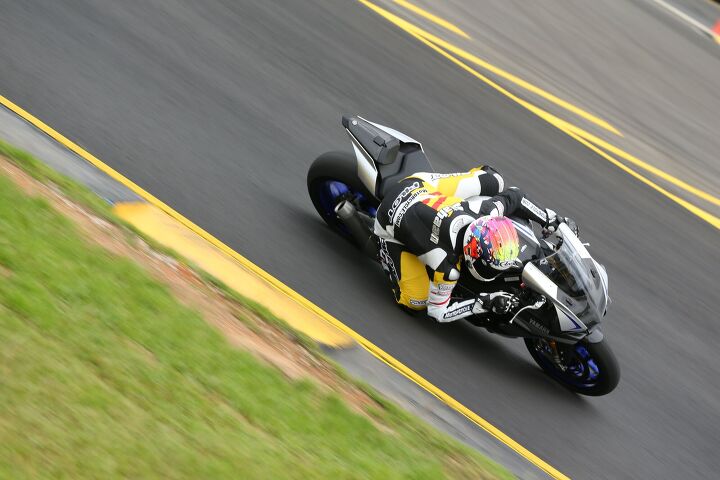 With the R1M and its 200-series rear, one gets more confident carrying greater lean angles. Ohlins Electronic Racing Suspension helps settle the bike in varying conditions. With the R1M and its 200-series rear, one gets more confident carrying greater lean angles. Ohlins Electronic Racing Suspension helps settle the bike in varying conditions.Gear ratios have been lowered for the first four gears to better suit the new engine, and though the R1 excels at high engine speeds, I never found it lacking any guts in the mid-range. Best of all, thanks in part to the uneven firing order, power delivery is seemingly telepathic from right hand to rear tire. Nearly 600-like in its narrowness, the R1 changes direction like one as well. Much of the credit goes to the magnesium wheels. Yamaha engineered the chassis to deliver front-end confidence, succeeding in its quest, if these pictures are any indication. KYB provides the 43mm inverted fork and single shock for the standard R1, both units all new for this bike. Compression and rebound clickers are located on top of the fork cap, making for easy adjustments. Brakes also get an upgrade for 2015, with rotors increasing 10mm to 320mm. They’re mated to ADVICS monoblock four-pot calipers now using a standard 108mm bolt pitch (instead of 130mm previously) for easy upgrades to aftermarket calipers. Steel-braided lines come standard. Also standard is ABS and Yamaha’s Unified Braking System, which applies rear brake pressure when the front is engaged. Brake pressure distribution is dependent on lean angle, wheel speed and front brake pressure readings from the IMU. 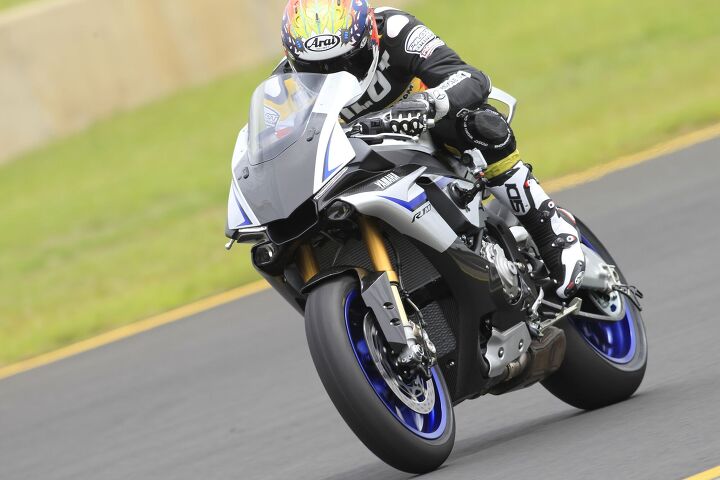 With the throttle pulled back and the front about to come up, if lift control was activating while this photo was taken, I really couldn’t tell. With the throttle pulled back and the front about to come up, if lift control was activating while this photo was taken, I really couldn’t tell.From an ergo perspective, the R1 is relatively comfy for a sportbike. Seat-to-bar distance is increased 55mm, while seat to peg is up 10mm; the peg-to-bar distance has decreased 5mm compared to the outgoing model. For my 5-foot, 8-inch frame, there was plenty of room to move about in the seat and/or scoot backwards to tuck behind the bubble. Without a doubt, the R1 is tall-rider friendly. Riding a Video Game Step up to the R1M and the ante is elevated even more. Overall feel and the impressions above all apply to the R1M, but B-Stone fit these bikes with V02 slicks instead of the standard rubber. So, it’s easy to see why handling impressions get top billing. That said, I’ve no reason to believe the R1M wouldn’t be a great handler with the standard tires. Ohlins suspension components are world renowned for being top notch, and the electronic suspenders on the R1M leave nothing to be desired. There wasn’t nearly enough time to test every single electronic setting, but in the most track-oriented Automatic setting, A-1, the difference compared to the KYB units is noticeable. The bike maintained its composure much better under hard braking, with limited dive. Same can be said about the shock on acceleration, as reduced squat helped the bike maintain its line. 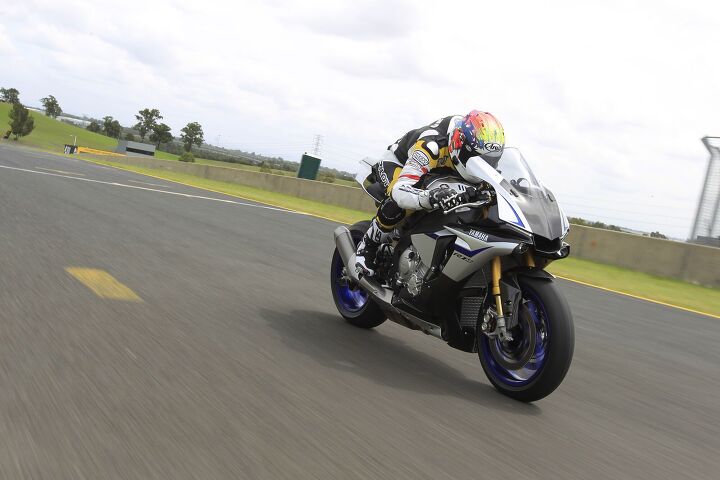 Aerodynamics, especially in a tuck, was a big priority for the design team. Even at triple-digit speeds, the R1 and R1M have nice cocoons of still air for the rider to tuck into. Aerodynamics, especially in a tuck, was a big priority for the design team. Even at triple-digit speeds, the R1 and R1M have nice cocoons of still air for the rider to tuck into.Where the R1M really gives the rider the MotoGP experience is with the Y-TRAC app. After the track sessions, ride data was downloaded to the app where I could see Google map overlays and graphs of individual or multiple laps displaying engine rpm, throttle position, road speed, gear position and lean angle in both numerical and graph representation. It also displays instances where traction control, slide control and lift control were activated. Turns out, looking at my graphs, that I didn’t use traction control at all but slide control was activated in several spots. Until looking at my data, I had no idea. This Is The Future Of Going Fast Herein lies the beauty of both the R1 and R1M. The electronics don’t interrupt the ride experience. Instead they enhance it, instilling confidence by helping you tame tricky situations. All the while you hardly know it’s working – just as it should be. Standard R1s will carry a price tag of $16,490 and will be available in Raven, Team Yamaha Blue/Matte Silver, and Rapid Red/Pearl White. R1Ms will only come in the Carbon Fiber/Liquid Metal color scheme for $21,990. 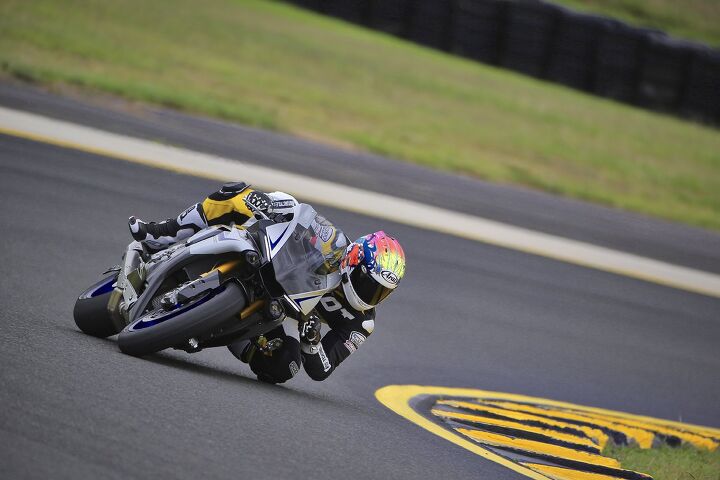 If you’re the competition, consider the 2015 Yamaha YZF-R1 and YZF-R1M the new benchmark to beat. If you’re the competition, consider the 2015 Yamaha YZF-R1 and YZF-R1M the new benchmark to beat.I really try to use the following cliche as rarely as possible, but Yamaha’s produced a game changer with the R1 and R1M. After overhearing several of the assembled journos from around the world, and chatting with the other Americans, we were all in agreement: the R1 kicks ass. Whether you’re a seasoned racer or an average Joe, never has it been so easy to go so fast. The amount of engineering incorporated into both the hardware and the software are equally impressive. A smaller, lighter and more powerful engine, combined with an equally compact chassis and extremely sophisticated electronics create a total package all other OEMs are going to have a hard time beating. + Highs</p>
 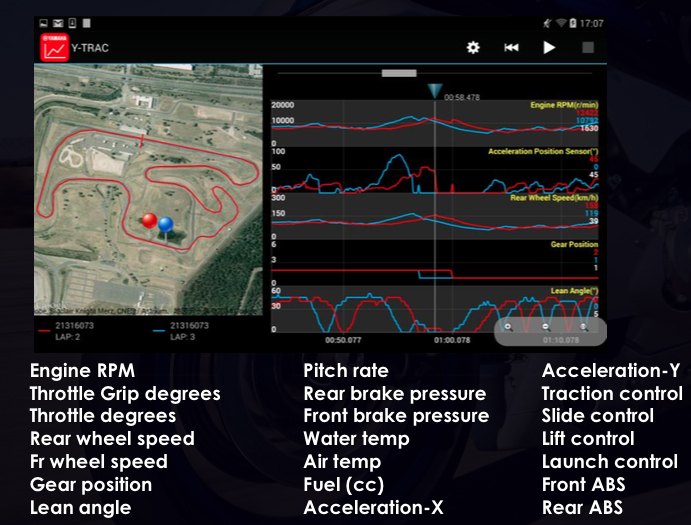 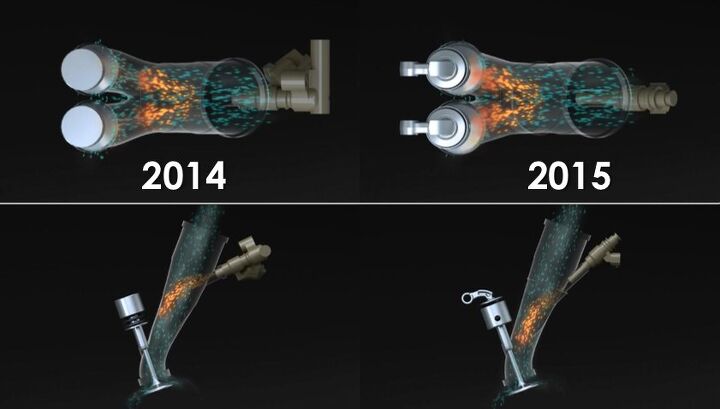 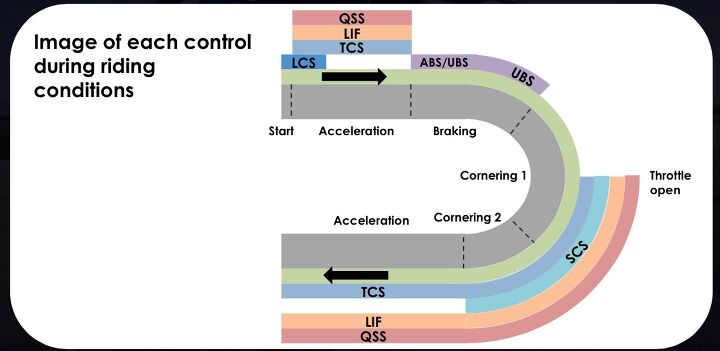  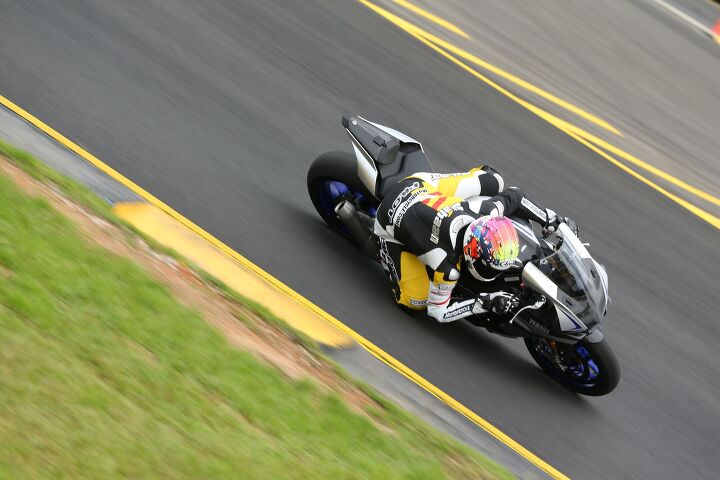 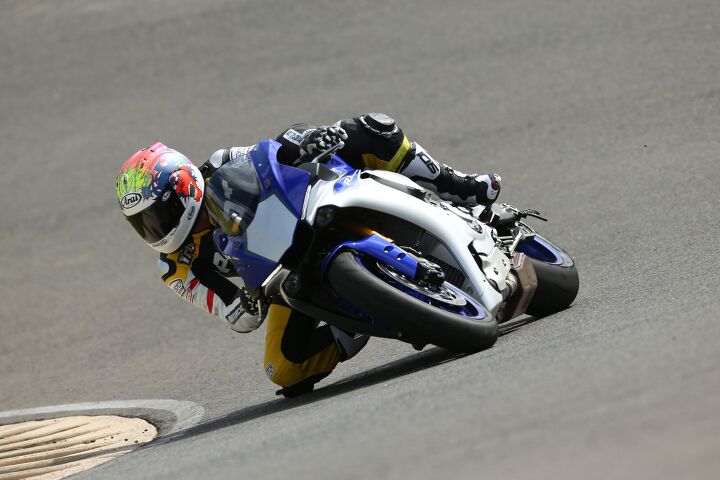 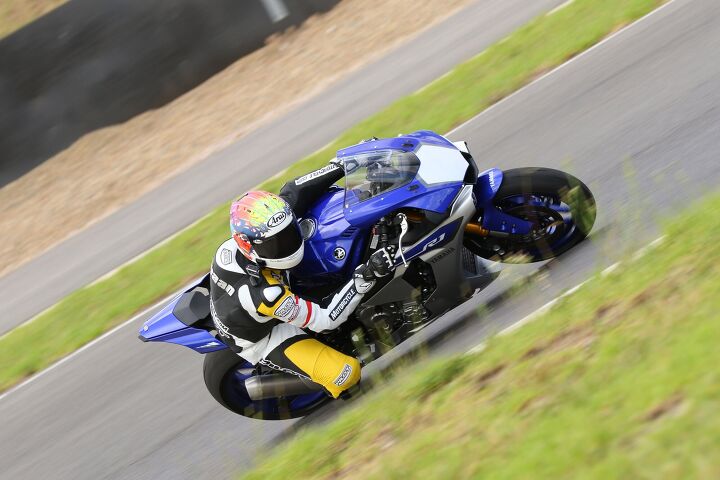 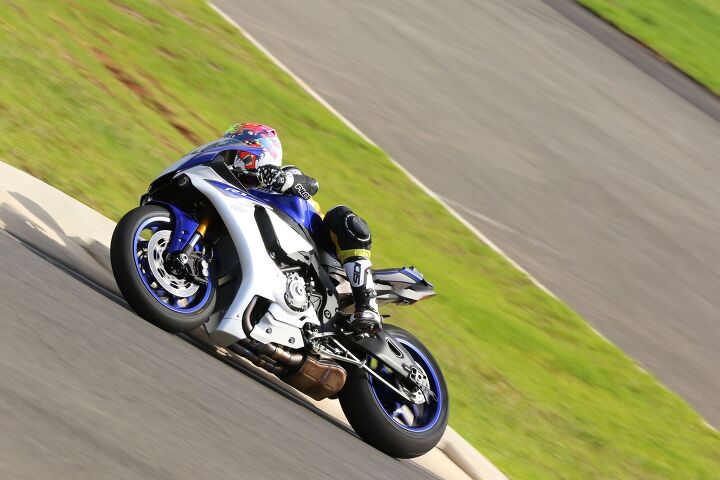 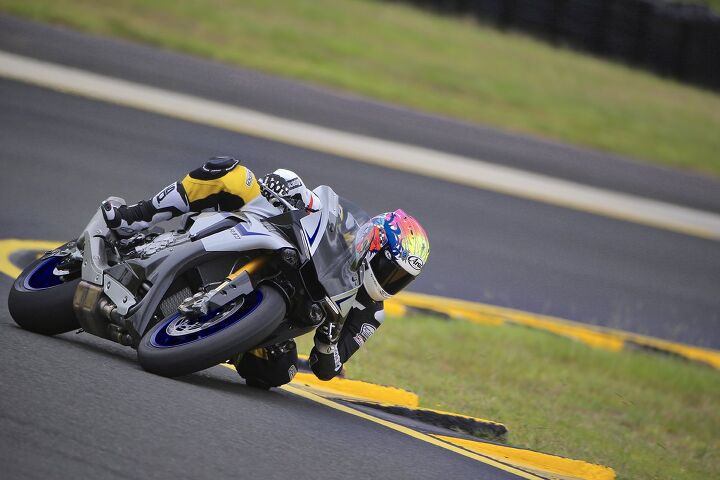 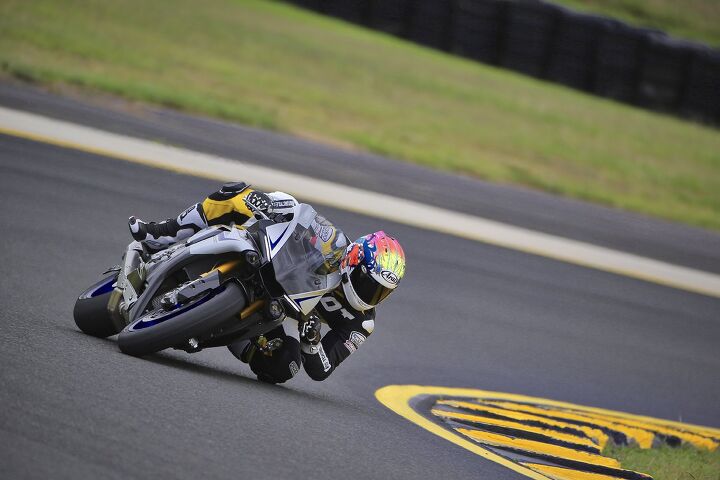 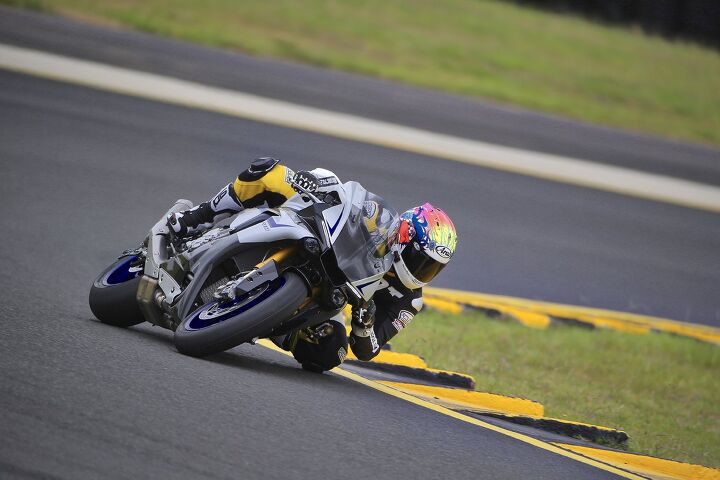 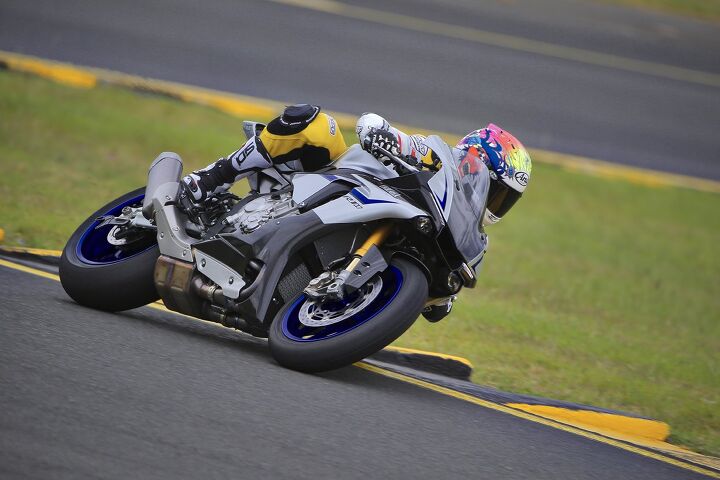 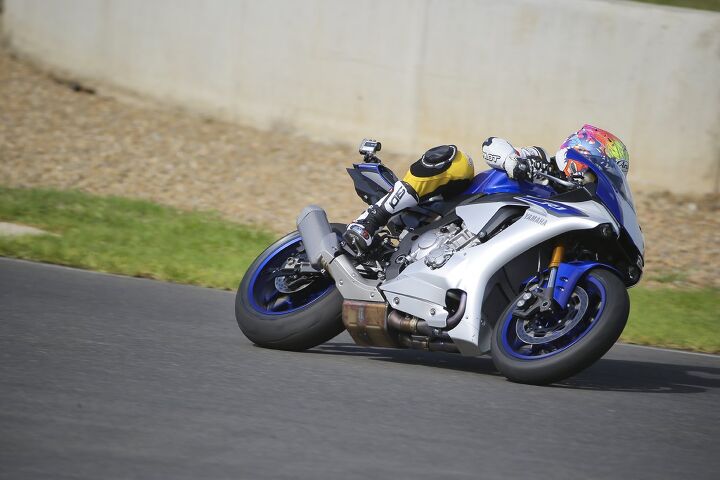 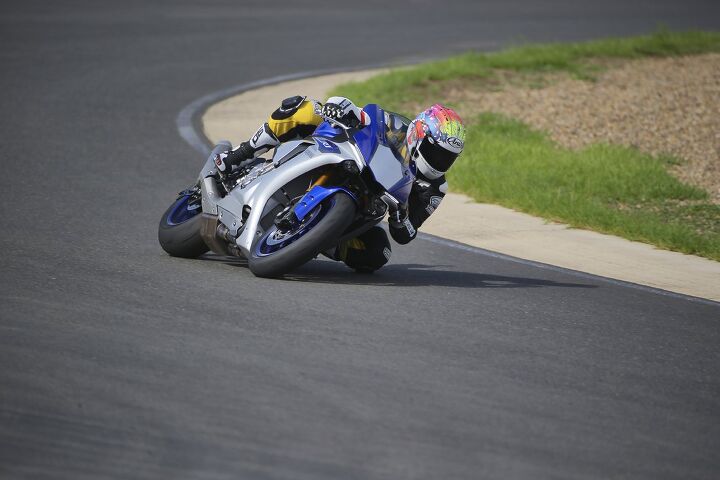 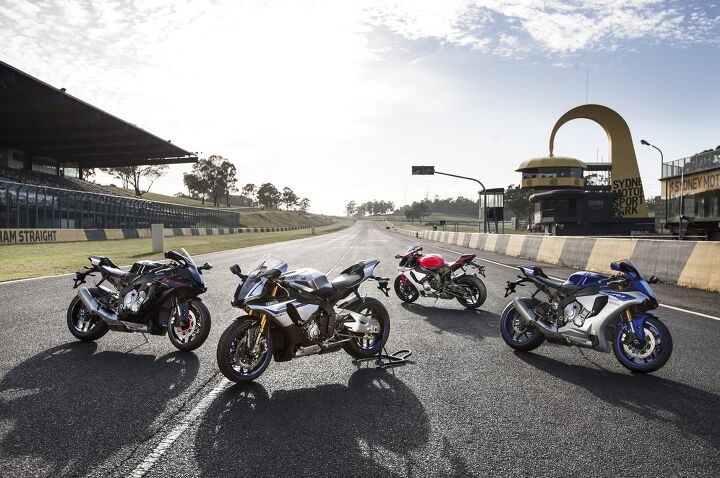 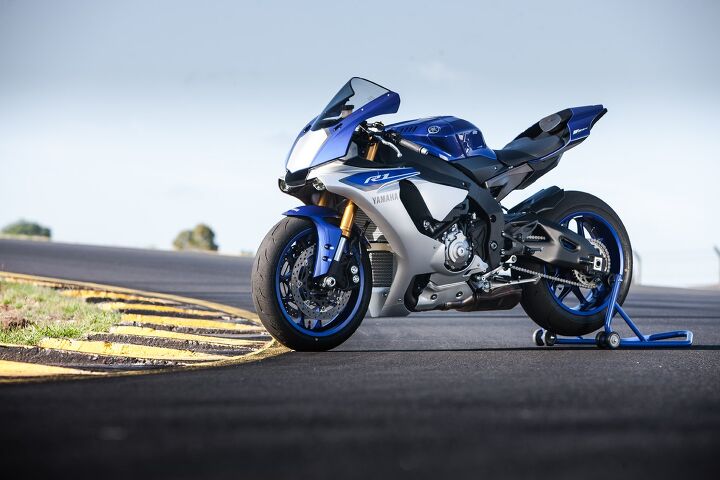 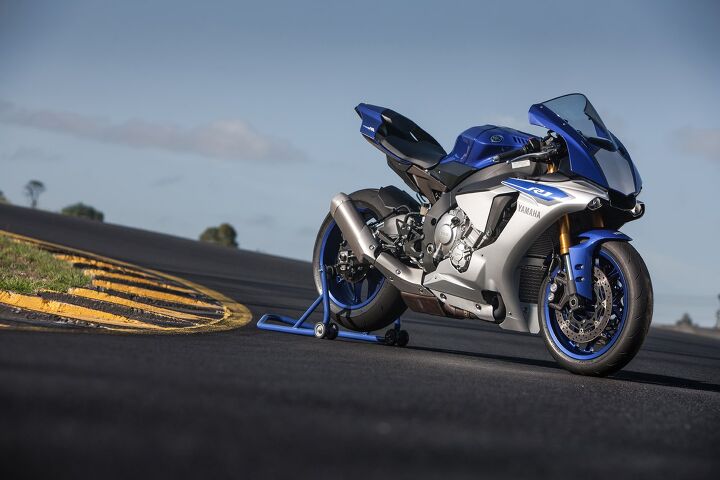 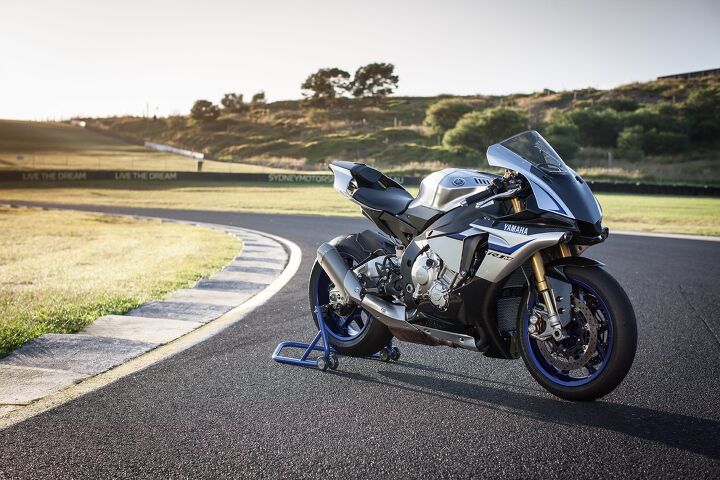 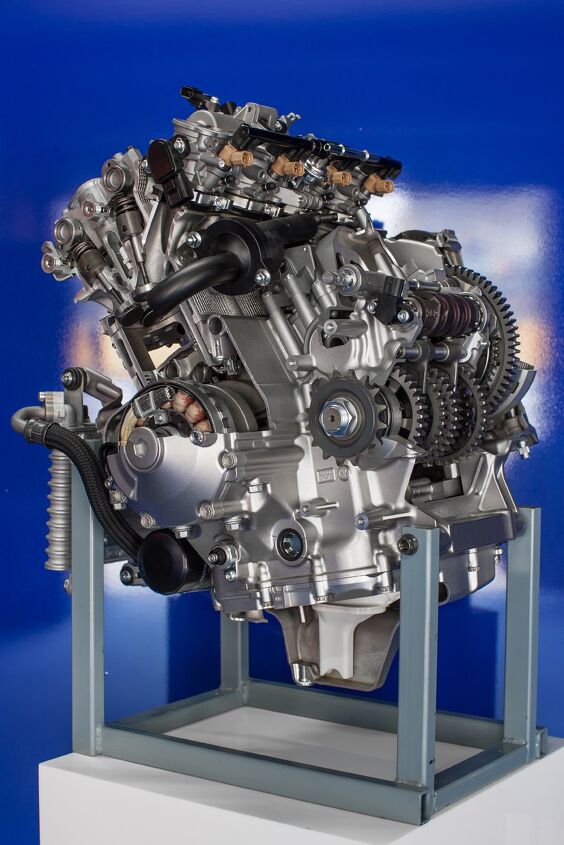 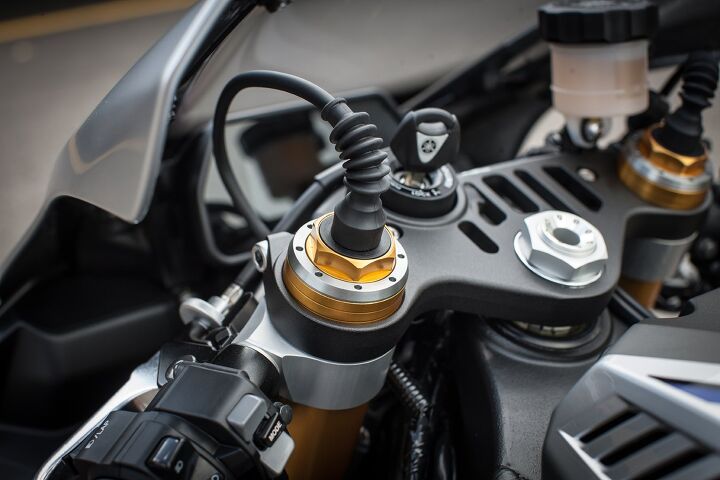 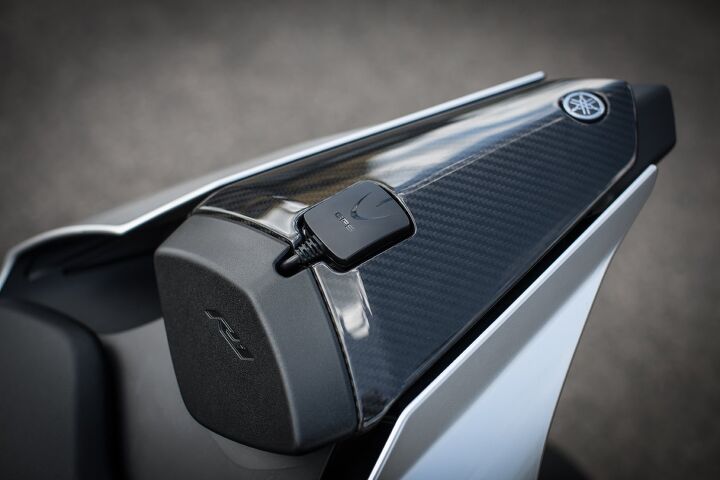 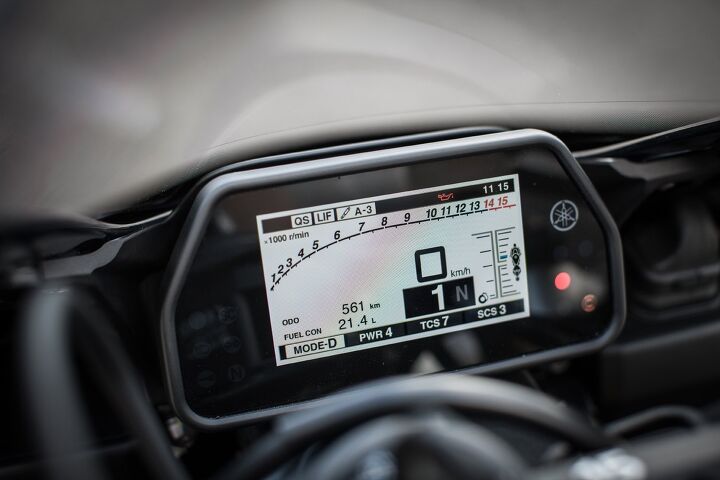 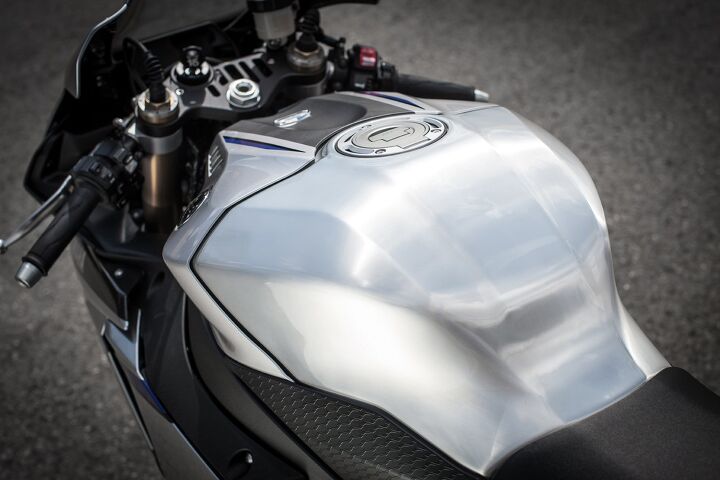 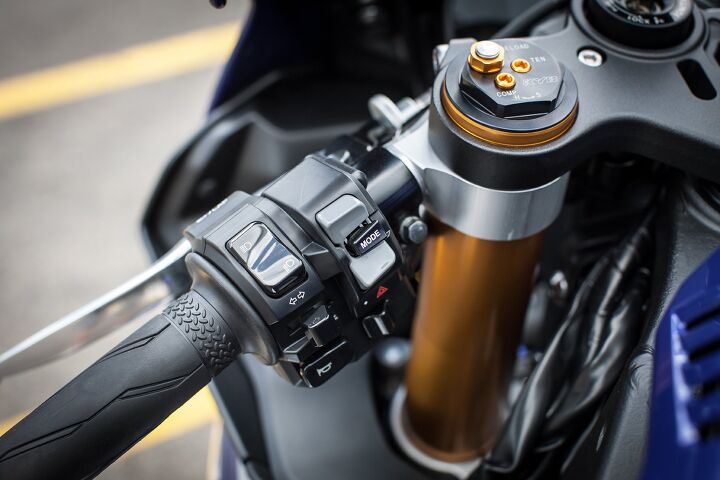 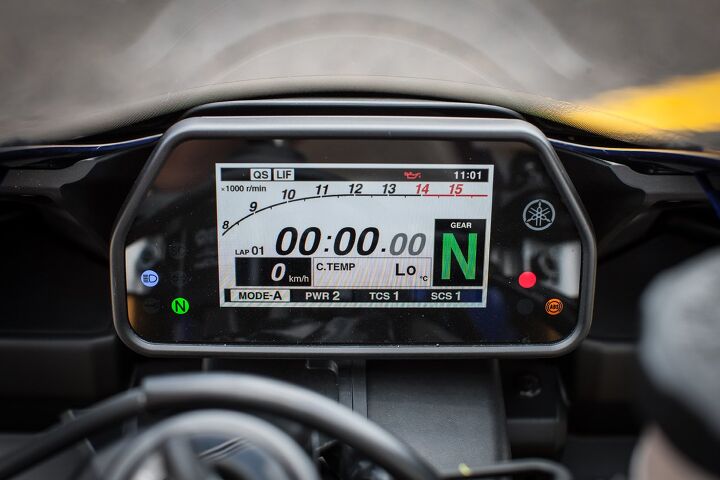 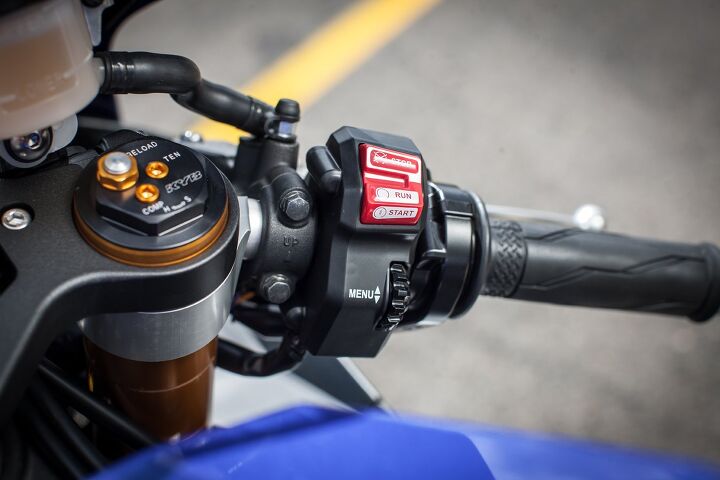 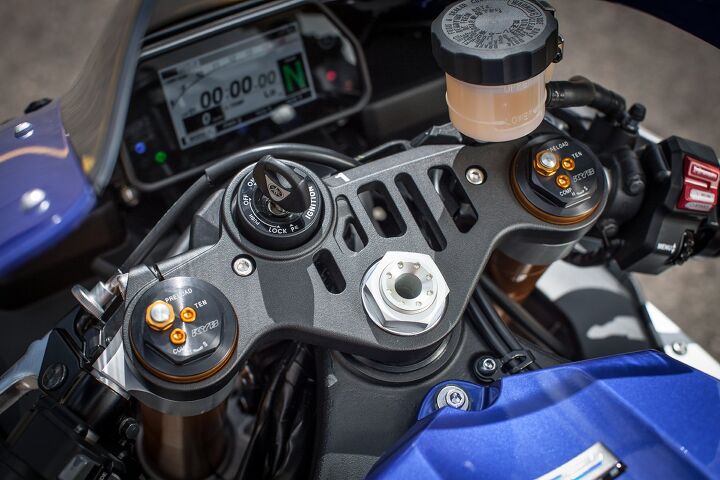 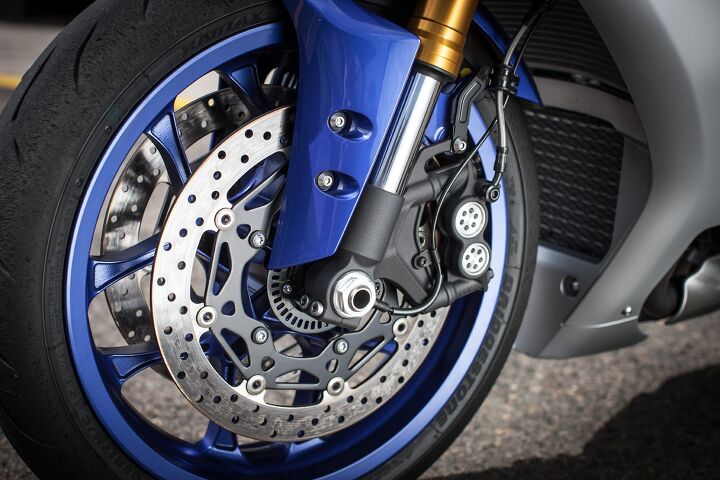 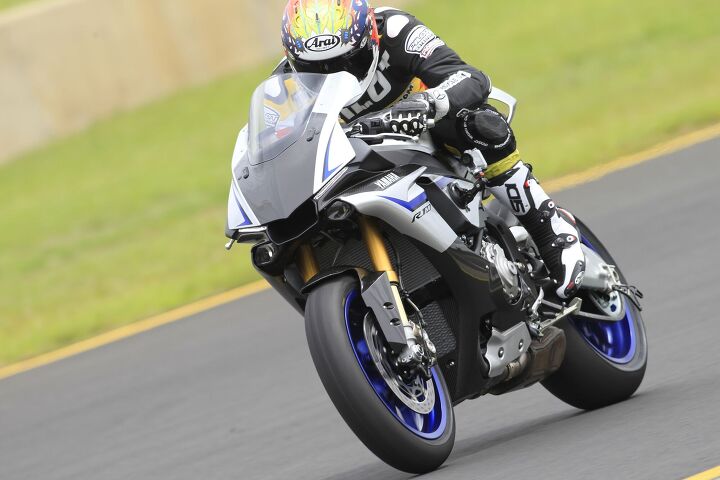 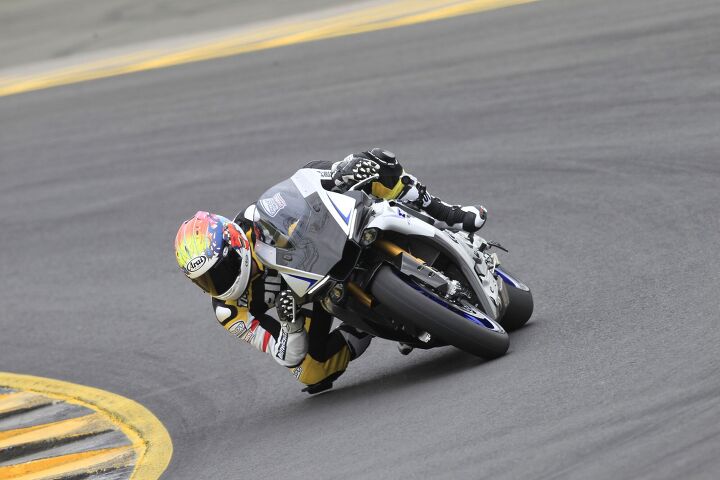 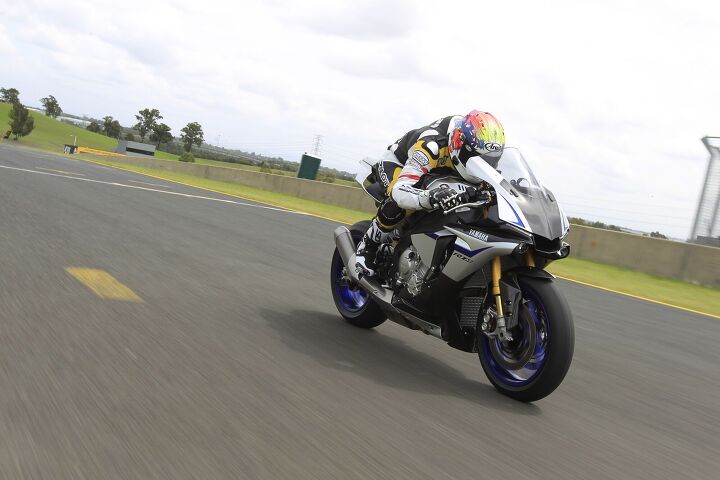 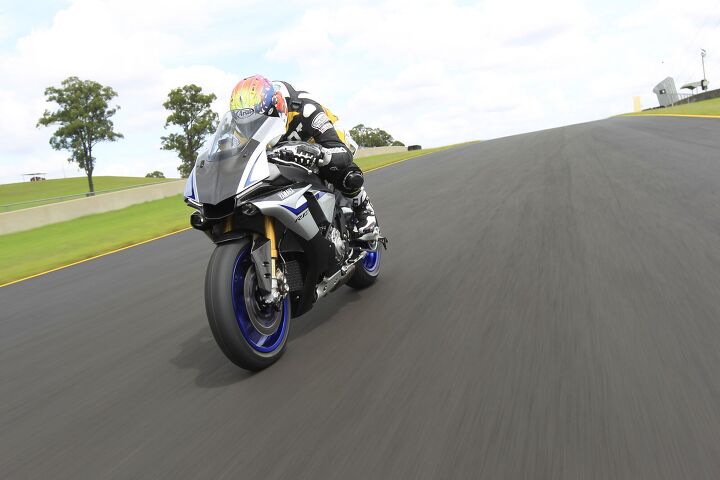 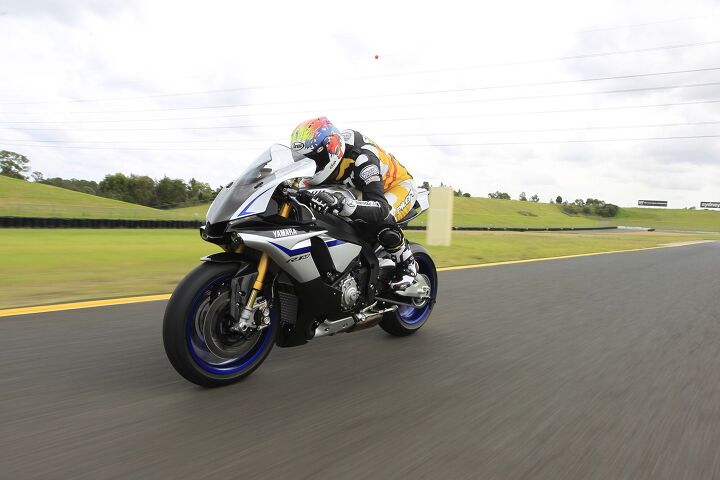 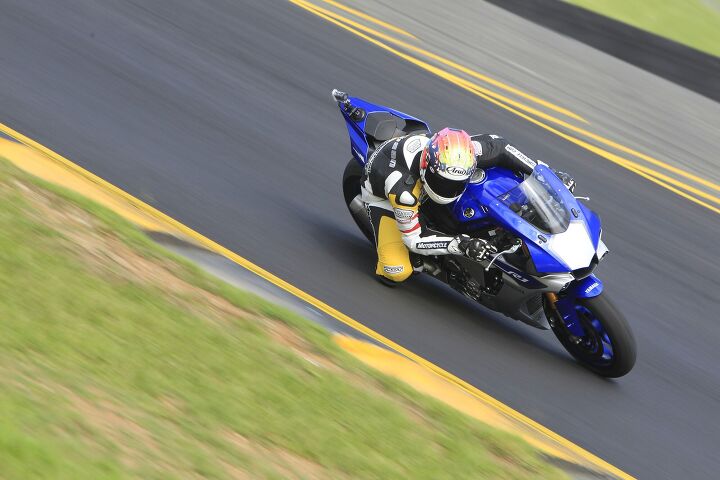 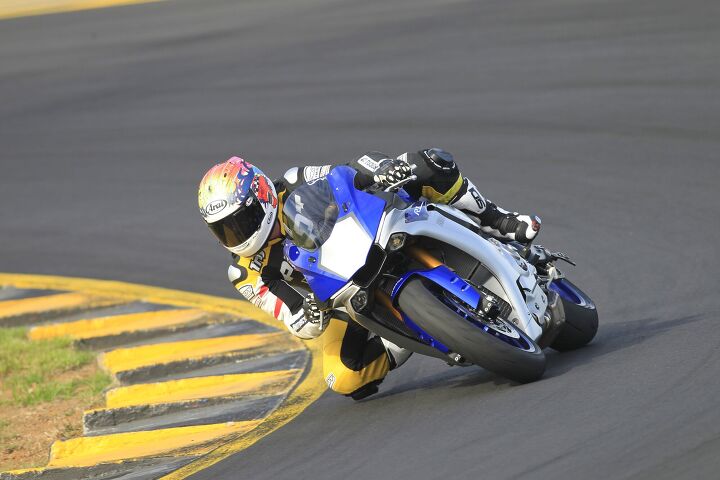 2015 Yamaha YZF-R1/YZF-R1M First Ride Review appeared first on Motorcycle.com. 2015 Yamaha YZF-R1/YZF-R1M First Ride Review appeared first on Motorcycle.com.Click here for full story...
__________________________________________________
I'm a bot. I don't need no stinkin' signature... |
|
|

|
 |
 Similar Threads
Similar Threads
|
||||
| Thread | Thread Starter | Forum | Replies | Last Post |
| [motorcyclistonline] - INSIDE THE MACHINE: 2015 Yamaha YZF-R1/R1M | Ninjette Newsbot | Motorcycling News | 0 | February 20th, 2015 11:20 AM |
| [motorcycle.com] - 2014 EICMA: 2015 Yamaha YZF-R1 and YZF-R1M Preview | Ninjette Newsbot | General Motorcycling Discussion | 20 | November 6th, 2014 07:03 PM |
| [motorcyclistonline] - 2015 Yamaha YZF-R1M | FIRST LOOK | Ninjette Newsbot | Motorcycling News | 0 | November 4th, 2014 02:40 AM |
| [sportrider - features] - 2015 Yamaha YZF-R1M First Look | Ninjette Newsbot | Motorcycling News | 0 | November 4th, 2014 12:50 AM |
| [motorcyclistonline] - 2015 Yamaha YZF-R1 and YZF-R1M Unveiled At EICMA | Ninjette Newsbot | Motorcycling News | 0 | November 3rd, 2014 06:40 PM |
| Thread Tools | |
|
|